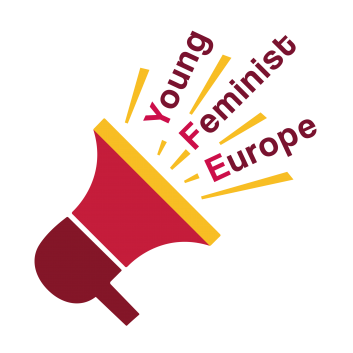A change for the better has recently taken place regarding the quality of Estonian web-based counselling on sexual rights: A counsellor figure notorious for his slut-shaming advice is no longer active. But what is the societal and cultural underpinning of the phenomenon of slut-shaming?
A new era has begun in the field of Estonian virtual youth sexual health counselling. An infamous counsellor figure, operating under the pseudonym “Dr Noormann” for nearly 20 years all in all, no longer provides web-based counselling, and has been replaced by specialists from the Estonian Sexual Health Association.
Dr Noormann used to be the pseudonym for the psychologist Tõnu Ots, born in 1941, who responded to the questions of the Soviet Estonian youth concerning relationship issues in a magazine called “Youth” since 1977. He had his own counselling section, and was seen as very progressive at the time. He became a living legend and was even coined in Estonian pop culture – several local pop giants at their time (Ruja, Gunnar Graps, Push Up) mentioned him in their lyrics. However as Estonia regained independence in 1991, and with the collapse of the Soviet Union in the same year, the figure diminished to history. In August 2010, Urmo Soonvald, the editor-in-chief of the largest news platform in Estonia, Delfi.ee, invited Ots to provide his counselling services once more in the virtual world, namely the portal’s youth section.
Since then, “Dr Noormann’s” counselling section on Delfi.ee was the most popular and accessible of its kind in Estonia. Young people would email him their concerns, probably not assuming that the advice would be provided by a person far older than themselves.[i] However, Dr Noormann’s advice soon became harmful and often shocking, involving speculations with invented diagnoses, providing inaccurate information, and, most of all, carrying a misogynist and moralist stance. He regularily practised slut-shaming and victim-labelling. For instance, if a young woman writing to him mentioned in her letter having had multiple sexual relationships or several partners, she was accused of “nymphomania” and of “sexual flabiness/promiscuity”. If she complained of having a dissatisfying sexual life with her partner, she was slut-shamed. If she was abused, she had “provoked” it. The “advice” and “moral” guidelines given to young women and young men differed drastically from one another: according to Dr Noormann, it was the task of girls to passively wait for boys to make the first move, and then it was the moral duty of the girls to “play hard to get” in order to not be mistaken as “sluts.” If any girl failed to meet these requirements, the boy had the right to abuse her.
How does slut-shaming work?
Slut-shaming operates as a form of silencing and humiliating – a verbal abuse technique to dominate and shut down women. Slut-shaming is an insult and moral punishment for (trans)women making use of their sexual rights, and is informed by specific societal norms. Slut-shaming is a negative evaluation against (trans)women’s sexualities and their sexual expressions, and is meant to shame them, to expell them from society as an outcast, to bully them, to label them as somebody who is supposed to be ashamed of themselves and who others should keep away from. Slut-shaming is a sexual double-standard, since there is no comparable sexual constraint and body control set against men and their moral reasoning. “Slut” is a label which should be reclaimed by feminists and sex workers united against capitalist patriarchy.
The category of a “slut” or a “whore” operates in an exclusive relationship with that of a “Madonna”, a pure mother figure, and bears Christian connotations. According to these norms, a “decent” woman is only allowed to have sex in wedlock in order to have children with her husband when the husband decides to. There is no space for her contentment, her pleasure, her needs, her preferences, or her reproductive and sexual rights. It is her fate to remain in an “honorable” monogamous wedlock throughout the rest of her life no matter the price or damage to her. A Christian mother figure is chaste, or in other words, asexual.
A “slut” is a (trans)woman who is believed to set a damaging moral example by claiming ownership over her sexuality and sexual expression. The term is also associated with a sex worker who works against capitalist patriarchy by charging for her services. While a “Madonna” gets to be glorified as a goddess, on the other side of the same coin, the “whore” gets to be shamed and abused. The pattern of many violent relationships should be pointed out here. We have all heard this story: first it started with buckets of flowers and compliments, and then evolved into insults, threats, emotional and financial bondage and violence… Violence against women as a phenomenon carries the same societal and cultural glorifying-shaming stamp that leaves the victim too ashamed to leave because she believes she is a “slut” who deserves to be punished. This is what society teaches, after all.[ii]
Slut-shaming is a practice based in patriarchy, a system characterised by cisgender male domination over all other groups, including over other men. It is by definition a non-egalitarian system and is one of the characteristics of the current domination society we all live in. Patriarchy is led by fear, exploitation, and a struggle for power. The logic behind a domination system is that one group has to be in power. Legitimized by this power, the elite takes the moral imperative and fully self-claimed right to dominate over all other groups. This leading group establishes the rules and makes all the decisions for everyone. The leading group exploits all available resources to fulfil its needs, and violates other groups’ freedoms in order to maintain its power.
The domination society
It is not very difficult to realize how mankind has been led by the norms of the domination society. The logic of this type of society even expands gender relations (and therefore patriarchy) and stretches to many other areas, for example the exploitation of natural resources or the violation of animal rights, based on capitalism. Violence in this system is not only justified by a non-critical stance and slogans like “mankind is the crown of nature!” and “the stronger one has the power!” etc., but is also continously practiced because the endless needs of the elite need to be fulfilled. This ignorance is strategic because it matches the foundations of both capitalism and patriarchy. The same pattern of thought (“I’m stronger, hence I treat all others as I please”) penetrates all areas of live, manifesting itself in violence against all oppressed groups framed as those who are “weaker”, powerless, insignificant, marginalised. Neglecting the rights of those who cannot speak back gets to be normalised and goes without saying.
Capitalist vocabulary is gender-blind, (but also class-, race-, etc -blind), and describes the market as a so-called “neutral/natural” system. All aspects of life get to be pushed into this machinery-like system described with words such as “client/customer”, “service/supply”, “raise/growth”, “risks”, “investment”, “demand”, etc. This leaves no space of maneuvre outside the marketplace, making it impossible to think outside the “box”, to play in a space not dominated, limited and pressured by the current system. Since all institutions, including NGOs, need funding to finance themselves, are expected to provide figures on measurable outcomes and report on their projects in the same way any entreprise would do, they also, no matter their agenda, help maintaining capitalist patriarchy. Only non-institutionalised grassroots radical activist collectives may partly operate outside the system.
The violent realms of silencing and oppression in capitalism go hand-in-hand with the gender order inherent to patriarchy. Slut-shaming is just one oppression technique. Other forms include fatphobia, ableism, ageism, lookism, islamophobia, xenophobia, racism, homophobia, transphobia, (cis-)sexism, etc. These all refer to the domination society where all these groups are oppressed against the one dominating one. The oppression works intersectionally and manifests itself differently, but the logic is the same: abuse and oppression is meant to abolish all plurality in order to maintain the status quo.
Change is possible
Thankfully, as the case of “Dr Noormann” illustrates, change is possible. The fight for the removal of Tõnu Ots and his replacement with the aforementioned specialists from the Estonian Sexual Health Association took quite some perseverance and was only possible through the cooperation of a number of feminists, human rights activists, and sexual health workers: As it is typical for Estonia, the struggle took place behind closed doors, including closed meetings between key players in human rights and the Delfi.ee editor-in-chief, where they were presented with a collection and analysis of Dr Noormann’s most horrifying counselling examples (these examples were published later on). The process continued for most of the five years the psychologist was counselling, and the final decisive aspect that made the change possible was neither shared nor discussed openly.
The figure of Dr Noorman can serve as a example for the fact that something which is considered to be “nostalgic” and good in one context should never be uncritically taken over to another. Furthermore, this case demonstrates that the fight against slut-shaming is a worthwhile fight, even if results may only be achieved after some time.
[i] In order to understand why the figure of Dr Noormann was resuscitated in Estonia, one needs to be aware that in contemporary youth culture, the figure is very loosely associated with the USSR, and the elderly psychologist behind the pseudonym was not known (for instance, his photo was not shown along his contact details in the portal’s youth section). Another important aspect to pay attention to is the discrepancy between the Soviet times and the contemporary neoliberalist Estonia: After Estonia’s re-independence, a deliberate amnesia and neglect towards anything associated with the Soviet lifestyle, public rhetorics and party system prevailed. In the late 2000s, these attitudes however were transformed into a rather humorous view on soviet culture, thereby not taking seriously anything associated with the past era. This in turn helped to reestablish some Soviet “brands”, whilst designing their contents differently. Dr Noormann represented a positive, nostalgic image and was thus chosen as a figure to be revived, under the rhetoric of “building inter-generational bridges”.
[ii] Incidentally, taking ownership of one’s gender identity and gender expression is similiarily often met with transphobic violence. Trans women get accused of “sexually provoking” simply by any gender expression, as if their mere existence would be a sexual invitation. Underlining societal and cultural standards and sets of beliefs seem to overlap here: a person’s self, identity and expression gets to be dismissed and silenced as if it was sinful. Instead, trans women get to be portrayed as “sick” or “immoral” (promiscuous, pejoratively flabby, etc) because their very existence gets to be read as threatening to the current gender order that is meant to maintain the status quo.
Eestikeelses seksuaaltervise-alases veebinõustamises on hiljuti on aset leidnud murrang: Dr Noormanni kuju, kurikuulus oma kahjuliku nõu poolest, ei nõusta enam noori Delfis. Tema nõuandepraktika hulka kuulus näiteks litsistamine ja misogüünia. Kuid mis paneb üldse andma noori naisi alavääristavat “nõu” ning millised ühiskondlikud ja kultuurilised
konstruktid hoiavad litsistamist ülal?
Feministeerium rõõmustab: alanud on uus ajajärk virtuaalse noortenõustamise kvaliteedis! Seksuaaltervisealaste šokidiagnooside ajastu on oma lõpu leidnud ja tänavu oktoobrist nõustavad Delfis noori Eesti Seksuaaltervise Liidu spetsialistid. Jõudu ja järjepidevust töös! Hea teada, et senine moralistipositsioon ja ebausaldusväärne teave, (ohvri)sildistamine ja olematute haiguslike seisunditega spekuleerimine Dr. Noormanni nime alt on ajalugu.
Siiski on iga piduliku uue algusega paslik vaadata ajas veidi tagasi. Toome Feministeeriumi lugejaskonna ette virtuaalpõhise noortenõu kurioossumite TOP 20 alates augustist 2010.
August 2010
Nõu, mis asetab alkoholi- ja tubakatarvitamise ning seksuaalelu alustamise hinnanguliselt ühele pulgale: “Mis seal salata, on asju, mis on head või halvad, kuid kuuluvad vaid täiskasvanute maailma ja pole noortele lubatud, ehk on noorte maailmas pahed: alkohol, suitsetamine ja seks. /—/ Ning paljud noored, üritades kas enda või teiste silmis näida täiskasvanutena, küünitavad alkoholi, suitsu ja seksi poole. /—/ Sellepärast on nende kolme küsimuse üldistatud vastus – kõikide nende – alkoholi, suitsetamise, seksi liiga vara omaks võtmisega me lühendame oma noorust, kiirustame astuma täiskasvanute maailma.”
Oktoober 2010
Nõu: ”Kui kõlbeliselt lubatu piir seatakse vaid penetratiivse (suguelundite sisekontakt) seksuaalvahekorra ette, kuid intiimkäperdamist ja oraalseksi mistahes partneriga endale moraalituks ei peeta, võtavad mehed seda ikka litsakusena.”
November 2010
Nõu: “Ühel ainult noormeeste vaidlusõhtul seletas üks elukogenud poiss, et lits on see tüdruk, kes laseb ennast esimesel kohtumisel suudelda, teisel püüab poissi ise esimesena suudelda ja kolmandal kohtumisel ei keeldu seksuaalvahekorrast. Aga see tüdruk, kes ise esimesena seksuaalvahekorra välja pakub, olevat prostituut. Nüüd ma siis tean, aga psühholoogina pean toimima meeste maailma reeturina ja lobisen selle nüüd tüdrukutele välja.“
Jaanuar 2011
Nõu, mis unustab mainida, et neiul on seksuaalsed õigused (seksist keelduda ja oma keha usaldada) ja neiu välimus ei puutu asjasse. Samas peab vajalikuks diagnoosidega ähvardada ning igaks juhuks ka noomida: “Oled noor ja ilmselt liiga vara oma seksuaaleluga alustanud. Sealt võiks leida seksuaalpsühholoogilisi põhjusi Sinu seksuaalsele külmusele (frigiidsusele). Kui seksuoloogi poole pöördud, võib ta põhjusena jõuda füsioloogiliselt tingitud võimetuseni nautida seksuaalvahekorda (anorgasmia). Kurb, kui see seisund jääb Sind saatma ka naiseeas.”
Veebruar 2011
Nõu, mis kiirustab kaebusteta noort naistearsti vastuvõtule ja hirmutab haigusliku seisundiga: “Esimest korda peaks naistearsti juurde minema umbes 12-13 aastaselt, /—/ vajadusega avastada võimalik kasvaja.”
Veebruar 2011
Nõu: “Naiste valimatut seksuaalvahekorda peetakse ikka litsakuseks ja selliste „lahke anniga“ tüdrukute infopank on nii mõnegi mehe märkmikus olemas. /—/ Selles perspektiivis on see „hiiliv prostitutsioon“.”
Juuni 2011
Nõu, mis kuvab paarisuhtevägivalda kui “tüli” ja “konflikti”, mida naine peaks proovima andestada. Jääb mulje, et andestamist segav faktor on löögi vale sihtmärk (loe: oleks selga või jalga virutanud, oleks kohe teine tera): “Kui mistahes tüli väljub sedavõrd kontrolli alt, et muutub füüsiliseks vägivallaks, /—/ Naise löömine näkku, aga ka näost tõukamine, on psüühikale naiselikkust mõnitav ja alandav ning mõjutab suhteid. Peresuhete konfliktiga nõustaja poole pöördunud naiselt küsime ikka — kas teie mees on teid näkku löönud.”
Juuni 2011
Nõu, mis alavääristab: “Kas selle lapse isa oleks siis kala või konn?”
Juuli 2011
Nõu: “Vägistamist on pärast väga raske tõestada, sest ka tüdrukud ise tõepoolest provotseerivad poisse „selle viimase piirini.“”
Juuli 2011
Nõu, mis kahtleb lähisuhtevägivalla all kannatanu aususes ega osuta seaduslikele ja juriidilistele abivõimalustele: “Ma arvan, et tüdruk ei ole sinuga lõpuni aus, ei julge tunnistada, mis tegelikult toimub. Võib-olla on tal endiselt tunded oma endise poisi vastu /—/ ning mõtleb kõikvõimalikke vabandusi välja.”
Juuli 2011
Nõu: “Mida nad mõtleksid või Sinust arvaksid? Küllap seda, et /—/ „no on ikka litsakas tüdruk, valmis korraga mitme poisiga amelema“. /—/, kuid küllap Sinu olemus midagi sellist väljendab ning see nende suhtumist seletabki.”
August 2011
Nõu: “Sinu käitumine tikub selle napi info põhjal küll kerglane olevat.”
Jaanuar 2012
Nõu: “Aga siis võib juhtuda ka väga hullu — kui naine osutub vaid füüsilist kontakti otsivaks ja ka teistega lodevalt suhtlevaks (kurtisaani efekt, nümfomaania), võib see mehele tunduda tema tunnete rüvetamisena.”
Märts 2012
Nõu: “Väljend „blondiin“ pole seotud mitte juuste värviga, vaid iseloomustamaks ükskõik, mis värvi peaga lihtsameelset tüdrukut, kelle juustealune aju on blondiks pleegitatud.”
Juuli 2012
Nõu, mis unustab mainida, et soov rahuldustpakkuva seksuaalelu järele on inimlik, mitte haiguslik: “Seksisõltuvus ehk nümfomaania või satüriaas on psüühikahäire ja nii noores eas ja vaid ühe vahekorra mõjul see välja ei kujune. Moralistide hinnangul oleks see lihtsalt seksuaalne lodevus või litsakus ja kindlat partnerit siis ei vajatagi.”
Juuni 2013
Nõu, mis sisaldab ähvardavat ettekuulutust: “Andumine tunnete ärateenimiseks on omamoodi prostitutsioon.”
Juuli 2013
Nõu, mis halvustab neidu, ent noormehe seksuaalset ajalugu samadel alustel luubi alla ei võta, niisamuti nagu noormehe hinnangulist otsust neiu seksuaalsetest valikutest probleem teha: “See on tuleviku rajamine ka isegi üpris kahtlasele minevikuvundamendile. Ainult see toob suhtesse kindlust ja edu, mitte armukadetsemine ega teise süüdistamine tehtud lollustes.”
Juuli 2013
Nõu, mis unustab mainida elementaarse, et kui praegune partner naist ei eruta või toimub penetratsioon piisava eelmänguta, konsensuseta, kuivalt, siis see vahekord nauditav olla ei saa: “Sellise ilmingu põhjus on suure tõenäosusega liiga varane seksuaalelu algus (praktiliselt ikkagi pedofiilia). Nüüd ehk suudab Sind aidata günekoloog või seksuoloog”
September 2013
Nõu, mis näeb korduvas vägistamises “väikese meheliku” vägivalla kasutamist ja “paha poisi” mängimist ja sildistab vägistamise ohvri “kergeks saagiks”, kes lasi end ära kasutada: “Armastust teesklev, väikest mehelikku vägivalda kasutav ja “paha poissi” mängiv mehehakatis võib tüdrukus tõepoolest armastuse äratada. Aga kergeid saake poisid pahatihti võrdse suhte vääriliseks ei hinda, vaid püüavad edaspidigi jätkata seda ärakasutamissuhtena.”
Jaanuar 2014
Nõu: “Kõlbluse seisukohalt on seksi üle kauplemine prostitutsioon. Füsioloogiliselt on esimene seksuaalvahekord valus. Kuid naisteajakirjades ilmselt siis naiste psüühikat kaitsvaid seisukohti silmas pidades on armastusega seotud seks (andumine) “õnnelik valu”, “läbi valu joovastusse”.
November 2014
Nõu: “Ning ega tüdrukud ju mingit silti oma vanuse kohta ka rinnas ei kanna, mis välistaks karistatava pedofiilia, kuigi tüdruku enda provotseeritud vahekorras.”
* Pealkiri on inspireeritud Delfi hüvastijätust Dr. Noormanniga ehk “MEENUTAME: TOP 20 kõige skandaalsemat mureküsimust Dr.Noormannile“.




![“Both women and men can be sexist!” – “Jeder und jede kann Sexist sein” [EN/DE]](https://www.youngfeminist.eu/wp-content/uploads/2016/06/image-150x150.jpg)


Average Rating